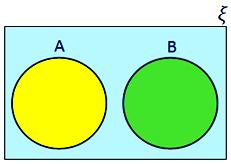
We call alphabet a finite set of elements called letters. In the last section we consider the case of substitution subshiftsand we give a necessary and sufficient condition for such subshifts to havea finite number (up to isomorphism) of Cantor factors and to have a finitenumber (up to isomorphism) of non-periodic Cantor factors. We take the opportunity to make some comments on the result werecalled before concerning chains of factors, we show that LR subshifts arecoalescent and that if two LR subshifts are weakly isomorphic then they areisomorphic. Section 5 is devoted to the proof of Theo-rem 1. In Section 4 we established that LRsubshifts are uniquely ergodic. This last result was certainly knownbut the author did not find reference. they do not have proper Cantor factor, unlessit is well-known they are not prime. We also give a necessary and sufficient condi-tion for a sturmian subshift to be LR, and we prove that sturmian subshifts( X, T ) are Cantor prime, i.e. In Section 2 we recall these properties.In Section 3 we characterize LR subshifts by means of S -adic subshifts, thisnotion was introduced in. The proof of this result intensively uses the notion of return words and theirproperties established in. The set of its non-periodic subshift factors is finite up to isomorphism. Let ( X, T ) be a linearly recurrent subshift. Anatural question arise: Do LR subshifts have a finite number of subshiftfactors (up to isomorphism) ? The main result of this paper answers to thisquestion: Theorem 1

We focus ourattention on their topological Cantor factors. X, T ) is linearly recurrent if there existsa constant K so that for each clopen set U generated by a finite word u the return time to U, with respect to T, is bounded by K | u |.

In this paper we continue the study of linearly recurrent (LR) subshifts initi-ated in. We also give a constructive characterization ofthese subshifts. We prove that givena linearly recurrent subshift ( X, T ) the set of its non-periodic subshift factorsis finite up to isomorphism. X, T ) is linearly recurrent if there existsa constant K so that for each clopen set U generated by a finite word u thereturn time to U, with respect to T, is bounded by K | u |. J u l Linearly recurrent subshifts have afinite number of non-periodic subshiftfactors


 0 kommentar(er)
0 kommentar(er)
